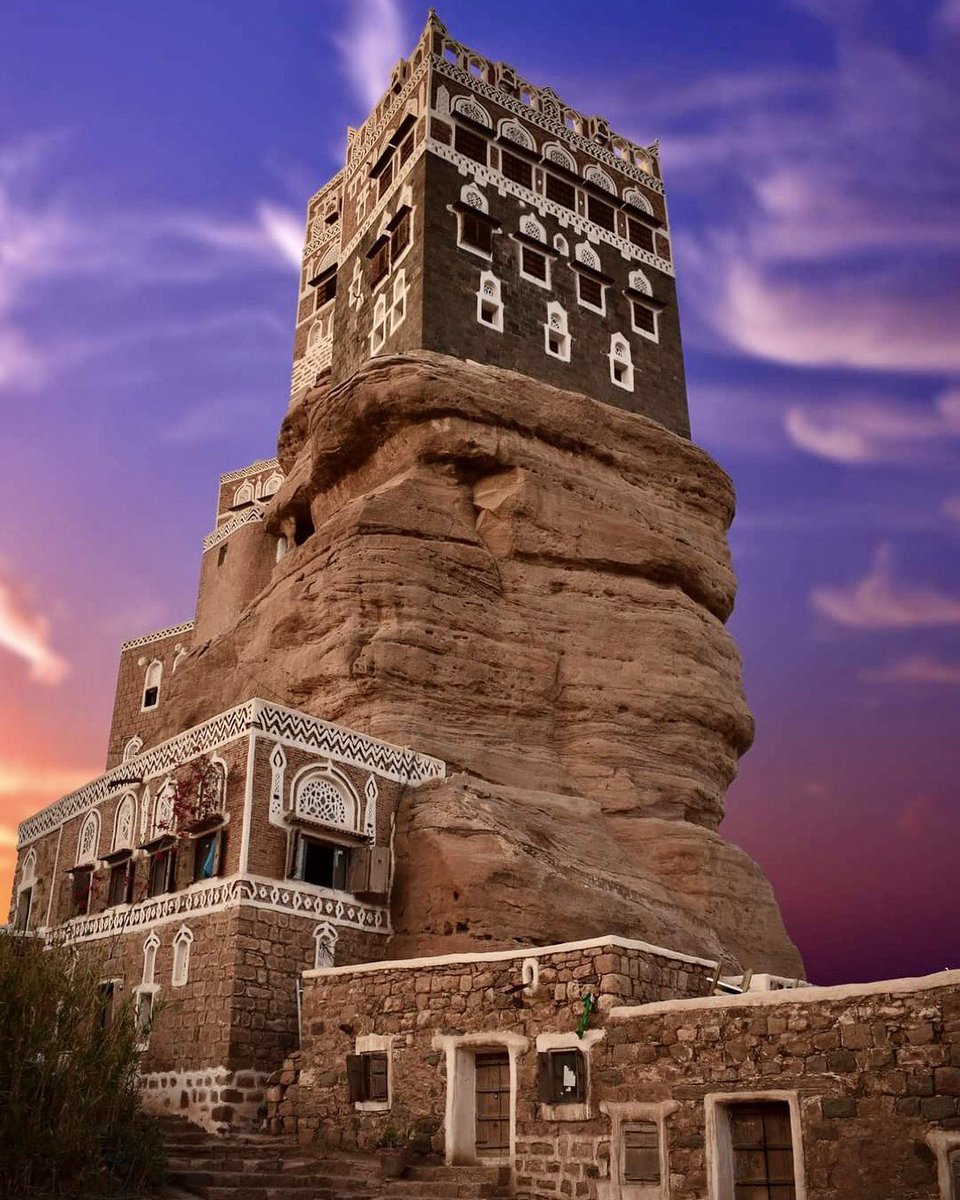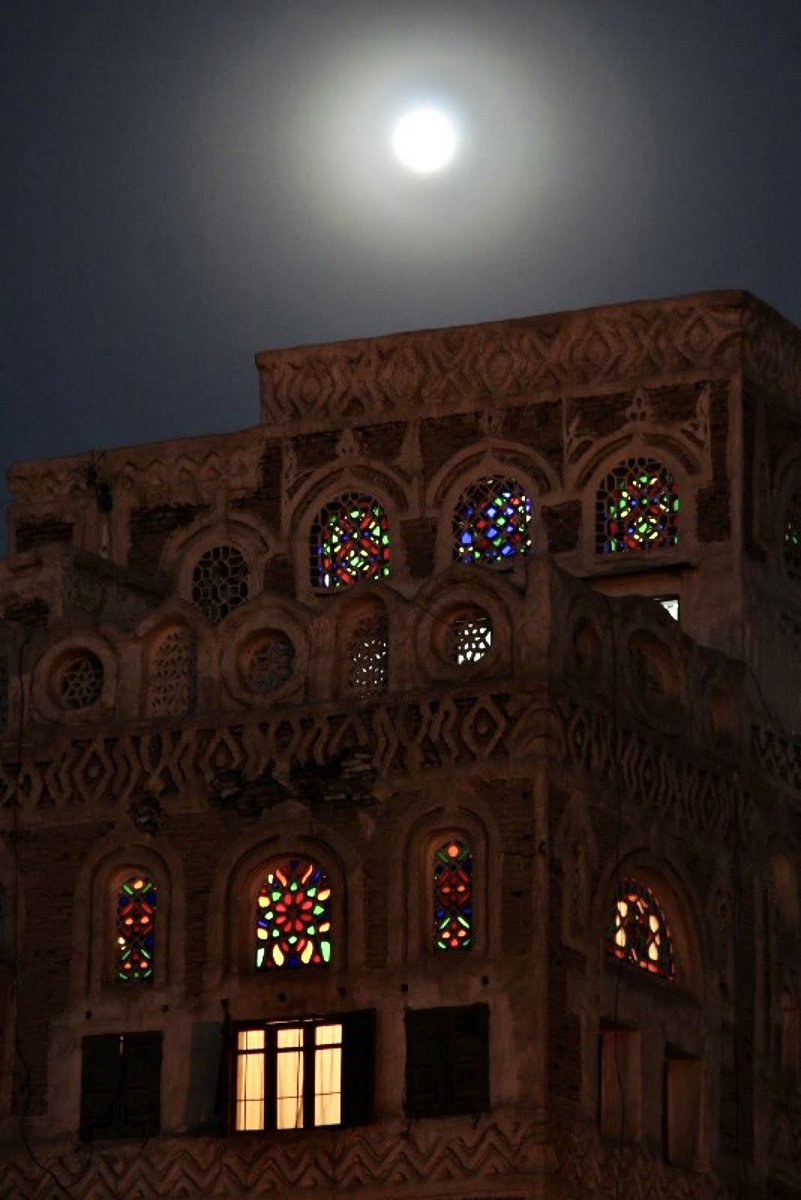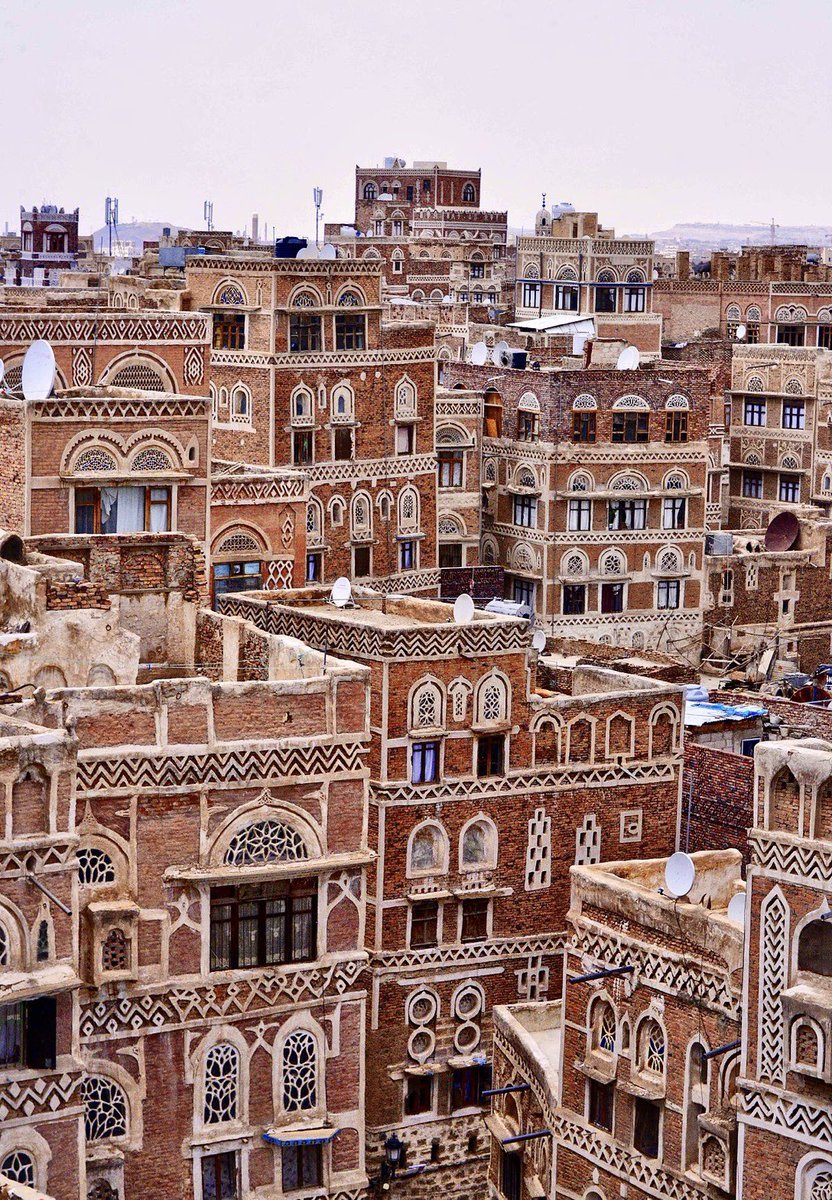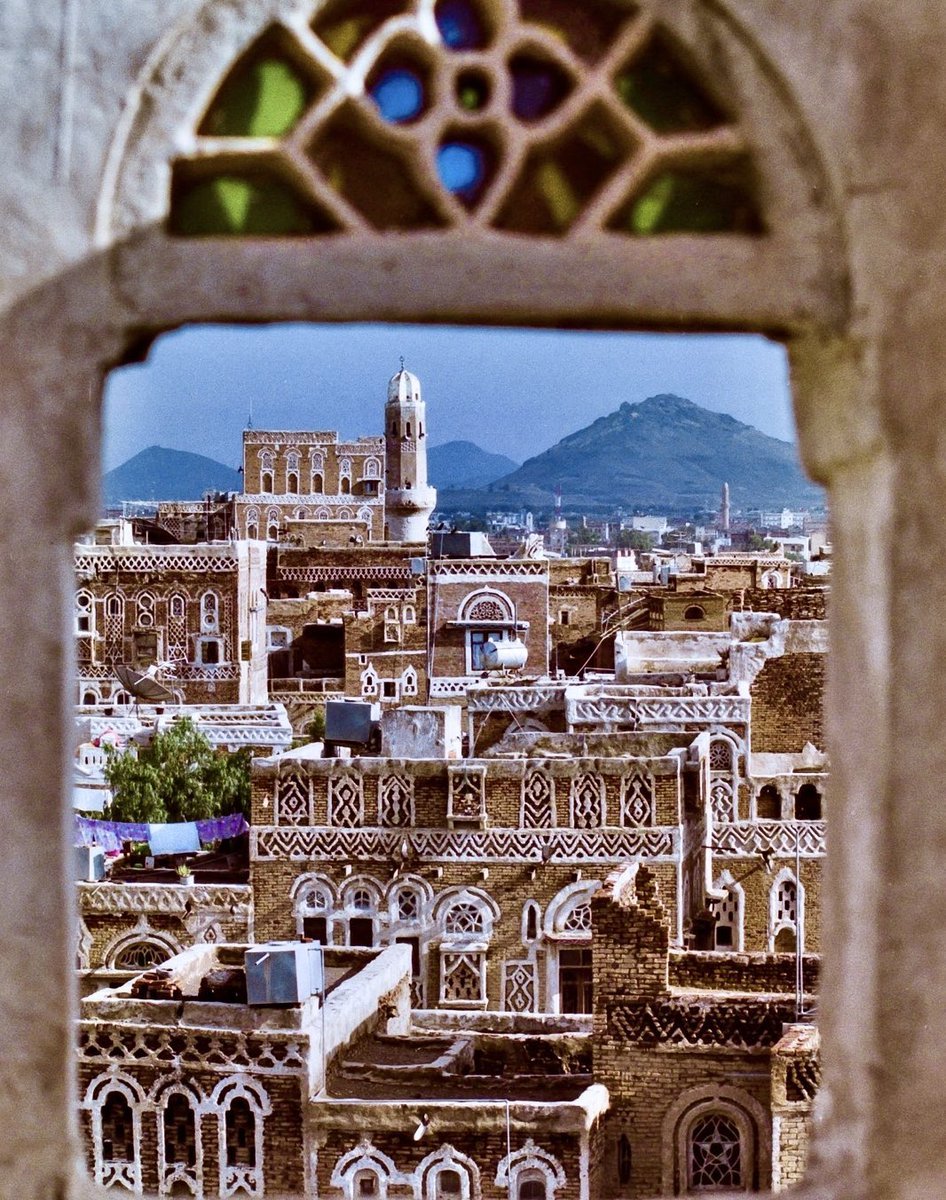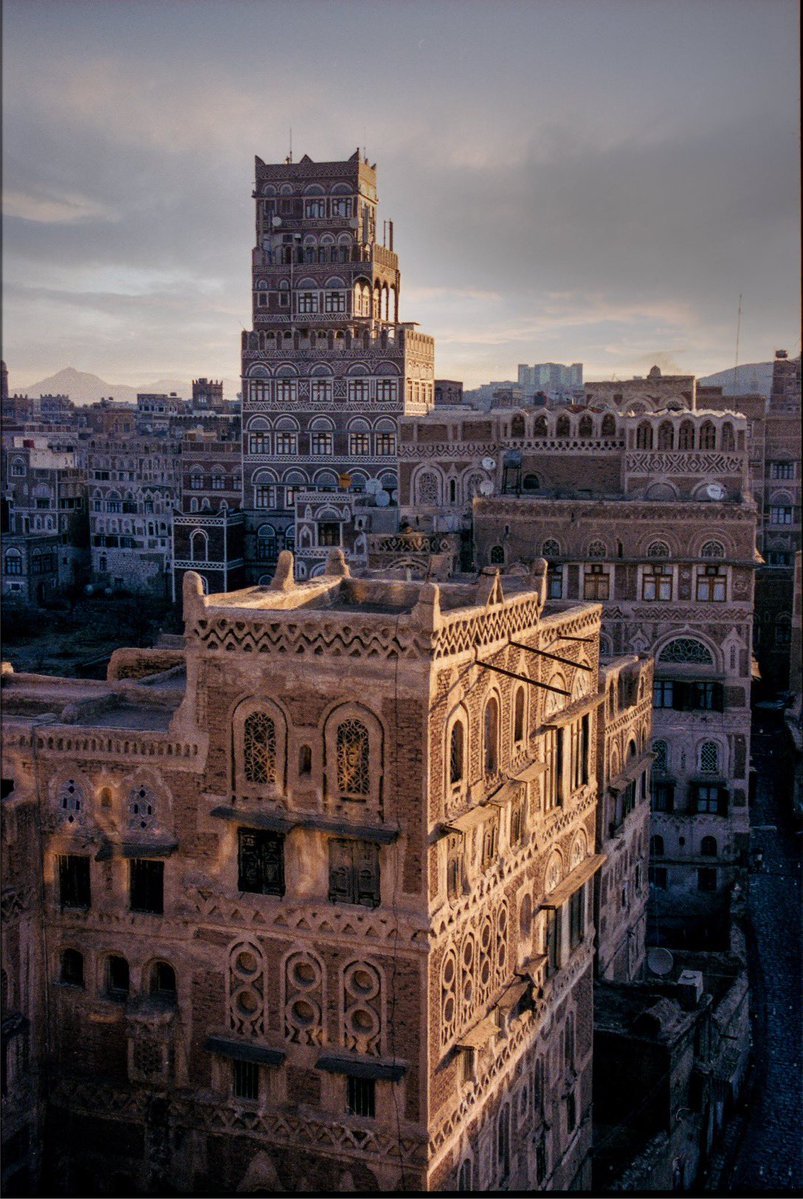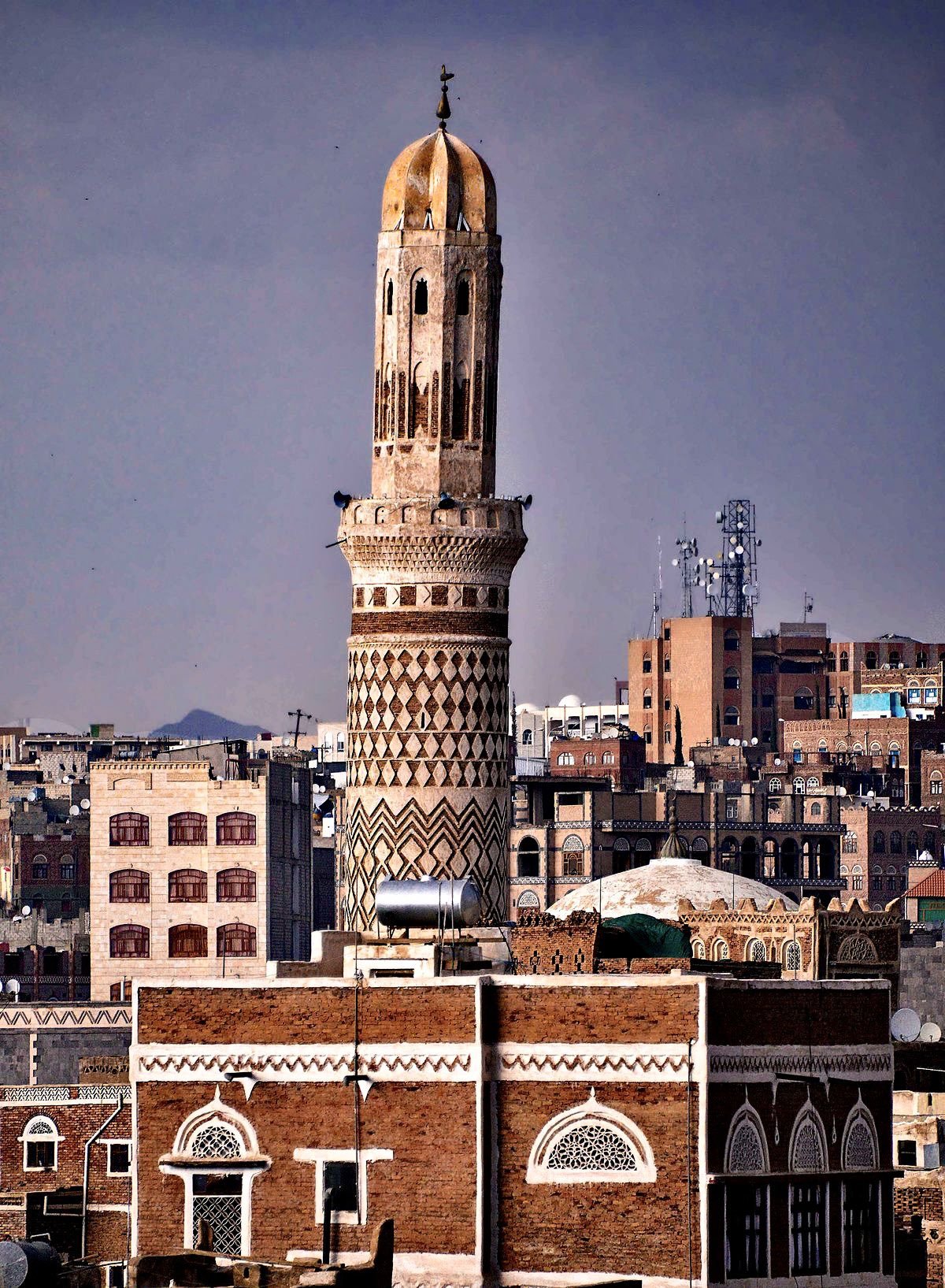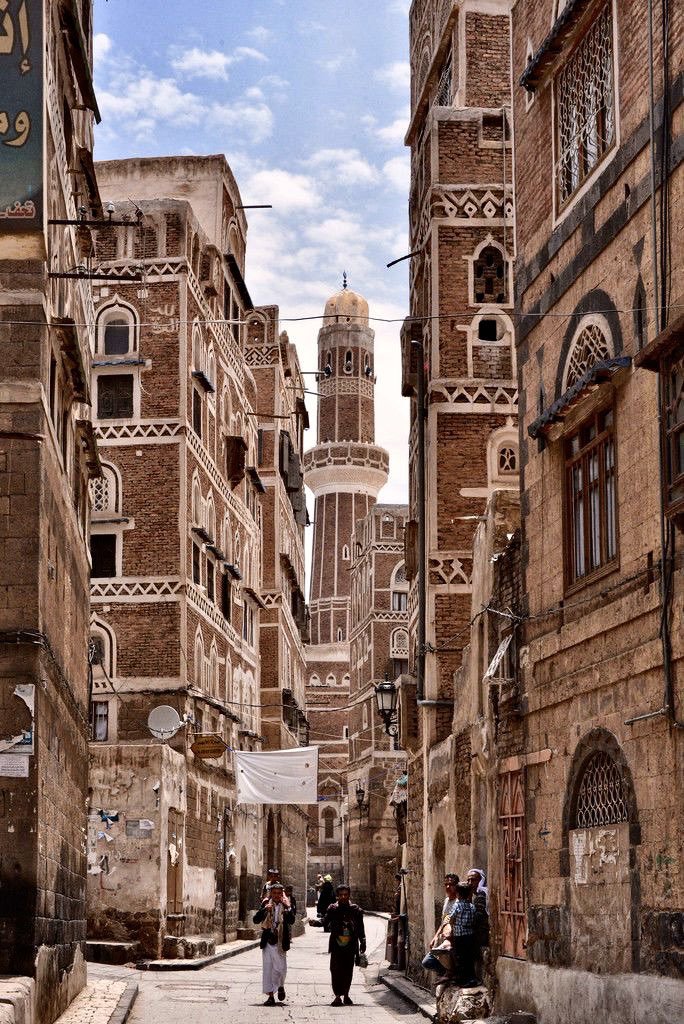Entrance into the Old City Sana’a, Yemen
Sana’a Yemen
“Venice of The Arabia”
What’s the capital of Yemen? Bet you didn’t know it was an ancient city. A hidden gem. Sana’a is one of the oldest cities in the world and continuously inhabited for over 2500 years. Its beauty and history make it one of the greatest treasures in the Arab peninsula.
The exact year the city was established is not on any known record. However, the local Yemeni legend has it that the city was founded one of the sons of Prophet Noah.
Sana’a was once the central home to the Islamic Caliphate and has continued as the capital of Yemen. There still remains 11 hammams (public bath houses), 107 mosques, and over 6,500 houses. All built before the turn of the 11th century. The city’s elaborate maze of alleys and narrow streets is still functional today - even with modern cars. A remarkable feat for a city that is over 2,500 years old. The city has managed to retain its magical charm and tradition over the centuries and even defying modern architecture today. The city has local gardens (Mqashama) in each neighborhood to ensure self sufficiency and are designed to be watered from the runoff the mosques. The drainage system from other residential and public areas are directed towards the green spaces/urban gardens as well. The environmentally sustainable design built out of necessity is a standard even today’s cities struggle to achieve.
The city has been placed under UNESCO protection at the request of the city in 1988.
The anciet city of Sana’A
The only remaining original gate of Sana’a. One of seven that originally protected the city from invasion. Commonly referred to as the Yemen Gate.
Sana’a is also home to a pre-islamic fortress called Ghumdan. The 20 story palace is thought to be the first skyscraper.
The city is mostly made up of brick houses. The lower levels are built of stone and the upper levels of the lighter brick. The windows are lined with white gypsum.
On average, the apartment style homes of Sana’a rise nine stories high. The windows are adorned with stained glass and make for a mesmerizing view, twinkling with light from the residents, in the desert night sky.
Sana’a is also home to one of the oldest mosques in the world: The Great Mosque of San’a (aptly named). Exact date of the construction of the mosque is not known but it is estimated to have been built in 633 A.D.
15 kilometers from Sana’a is the Dar Al-Hajar. Although it was built in the 1920’s, the architecture is identical to that of its parent city, 2400 years older. It was built as the summer retreat of the then ruler of Yemen. Of course, right below is a structure built in 1786 for a scholar for his retreat to study, only 150 years before the summer retreat.
